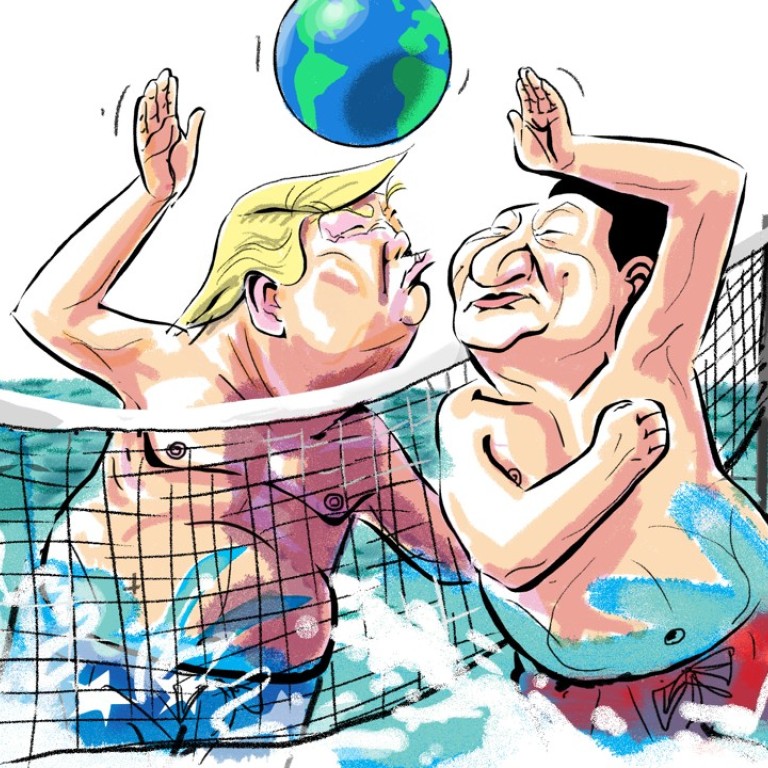
How US-China battle for control of the ‘global order’ is being played out in the South China Sea
Mark J. Valencia says while the US may paint China as an opponent of international order that is ‘militarising’ the South China Sea, it is no stranger to bending global norms, or to militarisation, itself
According to historian Paul Schroeder, the statesmen at the time had learned “from bitter experience that war was revolution [and] that something else even more fundamental to the existence of ordered society was vulnerable and could be overthrown: the existence of any international order at all”.
After its victory in the second world war, the US became the leader of the transformation to a new international order. This led to the Atlantic Charter and the founding of the United Nations. Ever since, the US has “pursued its global interests through creating and maintaining international economic institutions, bilateral and regional security organisations, and liberal political norms”, according to one RAND analysis.
This new international order was – and still is – centred on a US grand strategy. To the US, it comprises a rules-based free trade system, a hub-and-spoke military alliance system, multilateral cooperation and international law to solve global problems, and the proselytising of democracy and other American “values”. The US believes that challenging these principles, norms and values undermines its legitimacy and that of the international order.
Whether it’s trade, Taiwan or the South China Sea, the US doesn’t hold a winning hand against China
So the US wants to strengthen the existing status quo in which it is the dominant actor and patron. China, however, believes it is being constrained by the existing order, whose origins have their roots in the colonial era and its century of humiliation.
Beijing wants respect for its enhanced status and “core interests” and therefore seeks to bend the system to its benefit – just as the US did during its rise, and still does when in its interest to do so. The US has refused to join the International Criminal Court, has withdrawn from the Paris climate accord and frequently uses force and the threat of force in international relations, in violation of the UN Charter.
More recently, it has withdrawn from the Trans-Pacific Partnership and turned its back on the existing free trade system. This raises questions about just what is the international order and who is violating it.
The new US policy initiative of a “free and open Indo-Pacific” is driven by a perceived challenge by China to the existing “international order”. Brian Hook, a State Department adviser, says that order “is the foundation of peace and stability in the Indo-Pacific and also around the world. When China’s behaviour is out of step with these values and these rules, we will stand up and defend the rule of law.”
According to then-US National Security adviser H. R. McMaster, the core tenets of the “free and open Indo-Pacific” include freedom of navigation, the rule of law, freedom from coercion, respect for sovereignty, private enterprise and open markets, and the freedom and independence of all nations. These are the principles that the US applies to China’s policy and actions in the South China Sea.
Watch: China redeploys surface-to-air missile systems on South China Sea island
Indeed, at the recently concluded Shangri-La Dialogue in Singapore, US Secretary of Defence James Mattis asserted that China’s “militarisation” of its occupied features in the South China Sea is “for the purposes of intimidation and coercion” and challenged Beijing to conform to the existing rules in the South China Sea.
But the US and China have starkly different interpretations of how the “rules” apply there and these reflect diverging fundamental strategic core interests. “Militarisation” means different things to Beijing and Washington.
To China, its placement of “defensive weapons” on its own territory does not constitute militarisation but, rather, an exercise of the right to self-defence, enshrined in the UN Charter. In China’s view, the US has clearly militarised the region with its forward deployed troops, assets and patrols, including flyovers by its nuclear-capable B-52 bombers.
Watch: Chinese senior military official dismisses US defence secretary’s remarks on South China Sea militarisation
The problem is that the US conflates freedom of commercial navigation with a military priority – freedom of navigation for its intelligence, surveillance and reconnaissance vessels and aircraft that search for China’s vulnerabilities.
Moreover, the US insists that China must base its maritime claims solely on the 1982 convention and abide by the UN arbitration decision against it reached under its auspices. But as a non-ratifier of UNCLOS, the US also knows it cannot be brought to a similar hearing. And, in the past, the US has also refused to accept international judicial decisions.
The US-China contest for dominance in the South China Sea is a reflection of a more fundamental battle for control of the “international order” there and elsewhere – and that is why it is so fraught with danger.
Mark J. Valencia is an adjunct senior scholar at the National Institute for South China Sea Studies, Haikou, China

